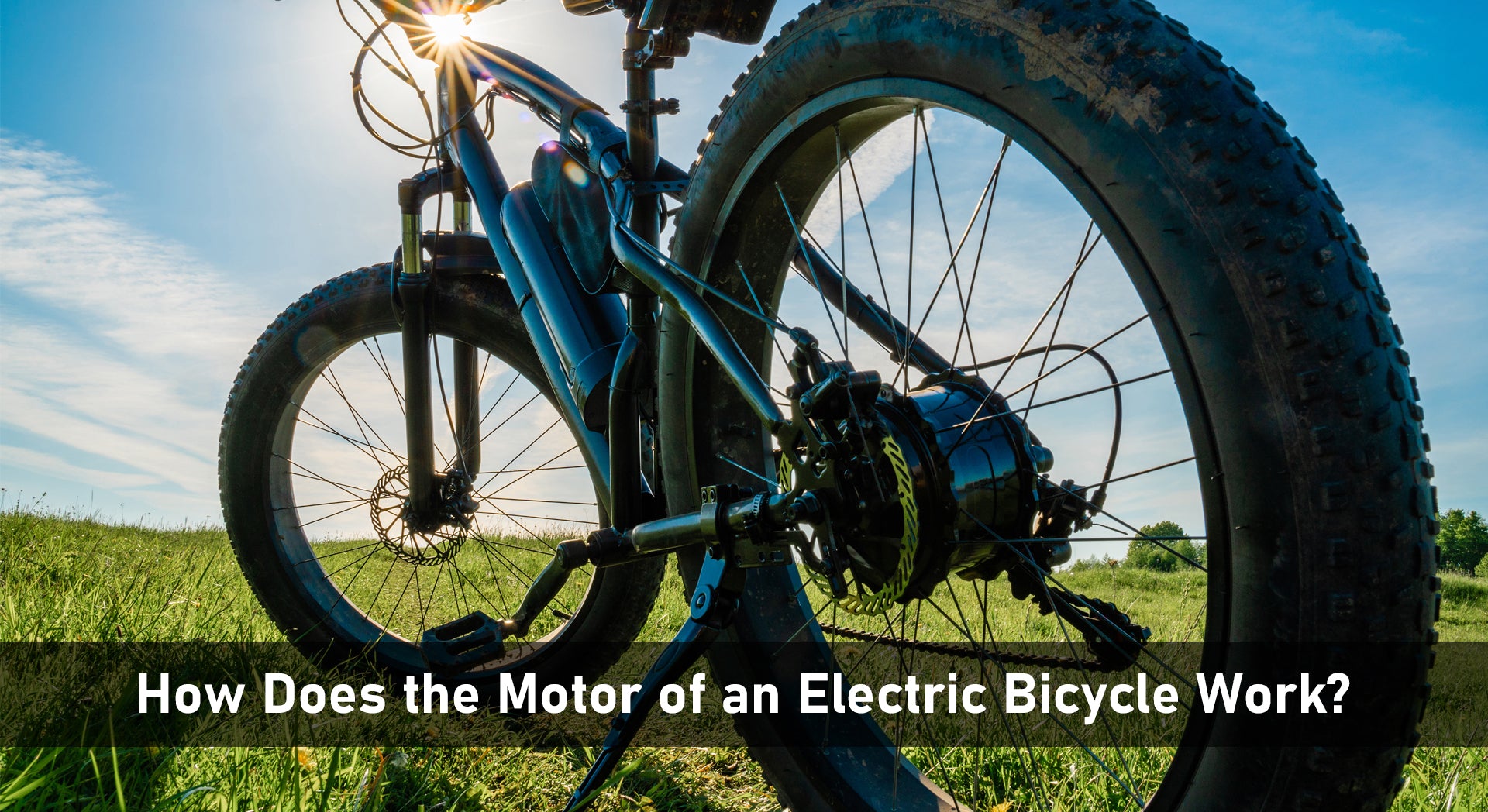La popularité des vélos électriques, également appelés e-bikes, n’a cessé d’augmenter ces dernières années. Ces véhicules innovants offrent un mode de transport écologique et efficace, combinant les avantages du vélo avec la puissance d’un moteur électrique. Au cœur d’un vélo électrique se trouve son moteur, qui est chargé de propulser le vélo vers l’avant et d’apporter une assistance au cycliste. Dans cet article, nous allons nous plonger dans le fonctionnement d’un moteur de vélo électrique et explorer ses différents aspects.
Qu'est-ce qu'un vélo électrique ?
Avant de plonger dans les subtilités d'un moteur de vélo électrique, il est essentiel d'avoir une compréhension de base de ce qu'est un vélo électrique. Un vélo électrique, souvent appelé e-bike, est un vélo équipé d'un moteur électrique qui assiste le cycliste pendant le pédalage. Il combine la puissance du pédalage conventionnel avec l'assistance d'un moteur électrique, améliorant ainsi l'expérience du cycliste et rendant le cyclisme plus accessible à un plus large éventail d'individus.
Composants d'un vélo électrique
Pour comprendre le fonctionnement du moteur d'un vélo électrique, il est important de connaître les différents composants qui le composent. Outre le moteur, un vélo électrique comprend généralement une batterie, un contrôleur de moteur, une transmission et une interface utilisateur. Chaque composant joue un rôle crucial dans les performances et le fonctionnement global du vélo électrique.
Le moteur : le cœur d'un vélo électrique
Le moteur est sans aucun doute le composant le plus important d'un vélo électrique. Il sert de centrale électrique, convertissant l'énergie électrique de la batterie en énergie mécanique, propulsant le vélo vers l'avant. Comprendre le fonctionnement du moteur est essentiel pour saisir la mécanique de base d'un vélo électrique.
Comment fonctionne le moteur ?
Les moteurs de vélo électrique fonctionnent selon le principe de l'induction électromagnétique. Ils sont constitués d'une série de bobines et d'aimants qui interagissent pour créer un mouvement. Lorsque le courant électrique traverse les bobines, il génère un champ magnétique. Ce champ magnétique interagit ensuite avec les aimants, ce qui entraîne un mouvement de rotation. Ce mouvement de rotation est transféré à la transmission du vélo, propulsant ainsi le vélo vers l'avant.
Types de moteurs de vélo électrique
Les moteurs de vélo électrique sont de différents types, chacun offrant des avantages et des caractéristiques distincts. Les trois principaux types de moteurs de vélo électrique sont les moteurs à entraînement direct, les moteurs à moyeu à engrenages et les moteurs à entraînement central. Explorons chacun de ces types en détail.
- Moteurs à entraînement direct
(Image provenant du web, veuillez nous contacter en cas d'infraction)
Les moteurs à entraînement direct, également appelés moteurs sans engrenage, sont un choix populaire pour les vélos électriques. Ces moteurs fonctionnent sans engrenage et offrent une expérience de conduite fluide et silencieuse. Ils offrent un couple élevé, ce qui les rend adaptés aux montées et aux terrains difficiles. Cependant, les moteurs à entraînement direct ont tendance à être plus lourds, ce qui peut affecter le poids global et la maniabilité du vélo.
- Moteurs à moyeu à engrenages
Les moteurs à moyeu à engrenages utilisent un ensemble d'engrenages internes pour fournir de la puissance à la transmission du vélo. Ces moteurs sont compacts, légers et efficaces. Les engrenages internes permettent un couple accru et des capacités de montée améliorées. Les moteurs à moyeu à engrenages offrent également un freinage régénératif, qui permet de recharger la batterie tout en ralentissant ou en descendant des pentes. Cependant, ils peuvent produire du bruit pendant le fonctionnement. YOSE POWER est spécialisé dans la production de kits de moteurs à moyeu 36V 250W/350W . Vous pouvez trouver différentes tailles de kits de vélo sur le site Web. Il existe certainement un kit qui peut répondre à vos besoins.
- Moteurs à entraînement central
Les moteurs à entraînement intermédiaire sont positionnés au niveau du vilebrequin du vélo, se connectant directement à la transmission. Ce placement offre une répartition équilibrée et centralisée du poids, ce qui se traduit par une meilleure maniabilité et une meilleure stabilité. Les moteurs à entraînement intermédiaire offrent un excellent couple et une excellente efficacité, ce qui les rend adaptés à divers terrains et styles de conduite. Ils exploitent les vitesses du vélo, permettant une expérience de conduite plus naturelle et plus réactive. Cependant, les moteurs à entraînement intermédiaire peuvent être plus chers que les autres types. Si votre budget est limité, vous pouvez tout à fait envisager le moteur à entraînement intermédiaire YOSE POWER de haute qualité, sûr et économique. La capacité de 36 V 350 W permet de grimper facilement les collines, la vitesse maximale jusqu'à 25 km/h permet de gagner beaucoup de temps et le couple maximal jusqu'à 80 N.m.
Puissance et performances du moteur
La puissance et les performances d'un moteur de vélo électrique sont déterminées par plusieurs facteurs, notamment la puissance, la tension et l'efficacité. La puissance du moteur indique sa puissance de sortie, les moteurs à puissance plus élevée fournissant plus d'assistance et de meilleures performances. La tension joue un rôle dans la détermination de la vitesse et des capacités de couple du moteur. L'efficacité fait référence à l'efficacité avec laquelle le moteur convertit l'énergie électrique en énergie mécanique, affectant l'autonomie globale et la durée de vie de la batterie du vélo électrique. YOSEPOWER produit des kits de vélo électrique qui répondent aux normes de chaque région. Ainsi, il n'y aura pas besoin de s'inquiéter des problèmes illégaux et le niveau de puissance peut toujours répondre aux besoins de déplacement des personnes. Pour en savoir plus, veuillez lire Comment choisir un kit de conversion pour vélo électrique ?
Contrôleurs de moteur
Les contrôleurs de moteur sont responsables de la régulation du flux de courant électrique de la batterie au moteur. Ils agissent comme centre de contrôle, garantissant que le moteur fonctionne de manière fluide et efficace. Les contrôleurs de moteur reçoivent des données provenant de capteurs, tels que des capteurs de vitesse et de couple, et ajustent la puissance de sortie en conséquence. Ils permettent également des fonctionnalités telles que des niveaux d'assistance variables et le freinage régénératif.
Gestion de la batterie et de l'alimentation
La batterie d'un vélo électrique stocke l'énergie électrique nécessaire pour alimenter le moteur. Les batteries lithium-ion sont couramment utilisées en raison de leur densité énergétique élevée, de leur légèreté et de leur longue durée de vie. Une gestion adéquate de l'énergie est essentielle pour optimiser les performances de la batterie et prolonger sa durée de vie. Cela comprend des fonctionnalités telles que les systèmes de gestion de batterie (BMS) qui surveillent et équilibrent les tensions des cellules, ainsi que des systèmes de distribution d'énergie intelligents qui s'adaptent aux besoins du cycliste et maximisent l'efficacité.
Avantages des moteurs de vélo électriques
Les moteurs de vélo électrique offrent de nombreux avantages aux cyclistes. Ils fournissent une assistance en cas de besoin, rendant le cyclisme plus accessible aux personnes ayant des niveaux de forme physique ou des limitations physiques variés. Les vélos électriques permettent des trajets plus longs sans effort excessif, réduisant ainsi la dépendance à la voiture et contribuant à un environnement plus vert. Ils favorisent un mode de vie actif et peuvent être un mode de transport amusant et efficace.
Conclusion
Le moteur d'un vélo électrique fait office de centrale électrique, fournissant l'assistance nécessaire aux cyclistes et améliorant l'expérience globale du cyclisme. Comprendre le fonctionnement des moteurs de vélo électrique et leurs différents types peut aider les cyclistes à faire des choix éclairés lors de la sélection d'un vélo électrique. Grâce à leur nature écologique et à leur capacité à combiner la puissance humaine et motrice, les vélos électriques sont sur le point de jouer un rôle important dans les solutions de transport durables et les modes de vie actifs.
N'oubliez pas que lorsque vous choisissez un vélo électrique, tenez compte de facteurs tels que le type de moteur, la puissance de sortie, la capacité de la batterie et la conception générale pour trouver l'équilibre parfait entre performances et facilité d'utilisation. Découvrez le monde des vélos électriques et profitez des avantages d'un transport efficace et respectueux de l'environnement.
N'hésitez plus, tous ceux qui roulent en vélo électrique vont l'adorer.
Dépêchez-vous et achetez votre propre vélo électrique ! Utilisez le code de réduction YOSELILY via https://yosepower.com/?ref=FROMLILY pour obtenir une réduction de 10 €.


Partager:
Tout sur les contrôleurs de vélo électrique
Vous pouvez également avoir ces mauvaises habitudes à vélo